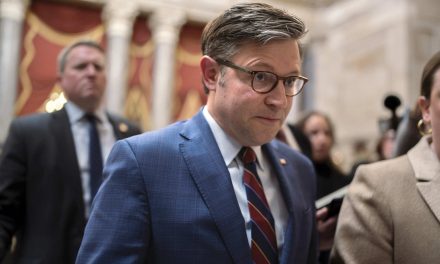
After being thwarted by Congress, President Joe Biden will use his executive authority to create a New Deal-style American Climate Corps that will serve as a major green jobs training program.
In an announcement in September, the White House said the program will employ more than 20,000 young adults who will build trails, plant trees, help install solar panels and do other work to boost conservation and help prevent catastrophic wildfires.
The climate corps had been proposed in early versions of the sweeping climate law approved last year but was jettisoned amid strong opposition from Republicans and concerns about cost.
Democrats and environmental advocacy groups never gave up on the plan and pushed Biden in recent weeks to issue an executive order authorizing what the White House now calls the American Climate Corps.
“After years of demonstrating and fighting for a Climate Corps, we turned a generational rallying cry into a real jobs program that will put a new generation to work stopping the climate crisis,” said Varshini Prakash, executive director of the Sunrise Movement, an environmental group that has led the push for a climate corps.
With the new corps “and the historic climate investments won by our broader movement, the path towards a Green New Deal is beginning to become visible,” Prakash said, referring to a comprehensive jobs-and-climate plan supported by many activists and some Democrats but ridiculed by Republicans as a socialist nightmare that would raise taxes and hamper the economy.
Prakash, a frequent Biden critic, participated in a White House call on Tuesday promoting the new job corps, which came as Biden tried to strengthen his appeal to young voters in the 2024 presidential campaign.
Environmental activists hailed the new jobs program, which is modeled after the Civilian Conservation Corps, created in the 1930s by President Franklin D. Roosevelt, a Democrat, as part of the New Deal.
“Young people nationwide are excited to see the launch of the American Climate Corps, a program which will put more than 20,000 young people on career pathways in the growing fields of clean energy, conservation and climate resilience,” said Cristina Tzintzún Ramirez, president of NextGen America, an organization that promotes education, registration and mobilization for voters age 18 to 35.
“Young people are fighting for climate justice every day in their community, and now they have even more opportunity to continue this fight in their careers,” Ramirez said.
More than 50 Democratic lawmakers, including Massachusetts Sen. Ed Markey and New York Rep. Alexandria Ocasio-Cortez, had also encouraged Biden to create a climate corps, saying in a letter on Monday that “the climate crisis demands a whole-of-government response at an unprecedented scale.”
The lawmakers cited deadly heat waves in the Southwest and across the nation, as well as dangerous floods in New England and devastating wildfires on the Hawaiian island of Maui, among recent examples of climate-related disasters.
A federal climate corps will “prepare a whole generation of workers for good-paying union jobs in the clean economy” while helping to “fight climate change, build community resilience and support environmental justice,” the lawmakers wrote.
The White House declined to say how much the program will cost or how it will be paid for, but Democrats proposed $10 billion for the climate corps in the climate bill before the provision was removed.
Republicans have largely dismissed the climate corps as a do-gooder proposal that would waste money and could even take jobs away from other workers displaced by the COVID-19 pandemic.
“We don’t need another FDR program, and the idea that this is going to help land management is a false idea as well,” Arkansas Rep. Bruce Westerman, chairman of the House Natural Resources Committee, said in 2021.
Representative Joe Neguse, a Colorado Democrat who has co-sponsored a climate corps bill, said it was important to train the next generation of federal land managers, park rangers and other stewards of our natural resources. Neguse and other Democrats have said the program should pay “a living wage” while offering health care coverage and support for child care, housing, transportation and education.
A key distinction between the original Civilian Conservation Corps and the new climate contingent is that, unlike the 1930s, the U.S. economy is not in an economic depression. The U.S. unemployment rate was 3.8% in August, low by historical measures. The new corps is also likely to be far more diverse than the largely White and male force created 90 years ago.
White House climate adviser Ali Zaidi said the administration will work with at least six federal agencies to create the climate corps and will pair with at least 10 states. California, Colorado, Maine, Michigan and Washington have already begun similar programs, while five more are launching their own climate corps, Zaidi said: Arizona, Maryland, Minnesota, North Carolina, and Utah.
The initiative will provide job training and service opportunities to work on a wide range of projects that tackle climate change, including restoring coastal wetlands to protect communities from storm surges and flooding; deploying clean energy projects such as wind and solar power; managing forests to improve health and prevent catastrophic wildfires; and implementing energy efficient solutions to cut energy bills for consumers, the White House said.
Creation of the climate corps comes as the Environmental Protection Agency launches a $4.6 billion grant competition for states, municipalities, and tribes to cut climate pollution and advance environmental justice. The Climate Pollution Reduction Grants are funded by the 2022 climate law and are intended to drive community-driven solutions to slow climate change.
The grants will help “communities so they can chart their own paths toward the clean energy future,” EPA Administrator Michael Regan said Wednesday.
The deadline for states and municipalities to apply is April 1, with grants expected in late 2024. The deadline for tribes and territories is May 1, with grants expected by early 2025.














